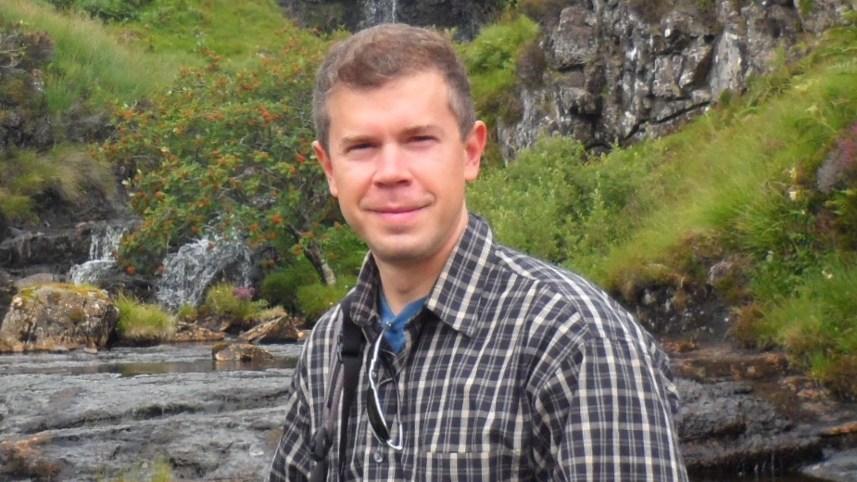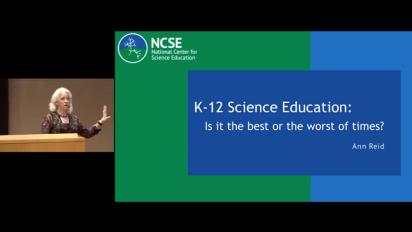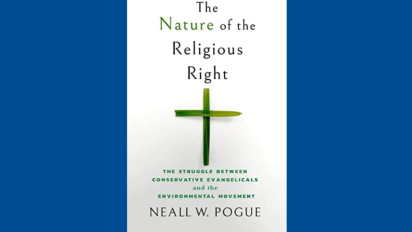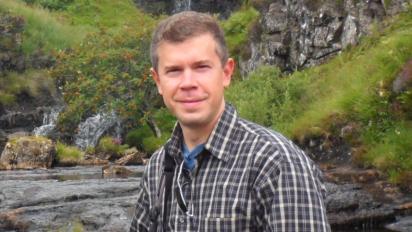Random Samples with Neall W. Pogue

Neall W. Pogue is Assistant Professor of Instruction at the University of Texas, Dallas. His book The Nature of the Religious Right: The Struggle Between Conservative Evangelicals and the Environmental Movement (reviewed by us here) was published by Cornell University Press in 2022. This interview has been edited for length and clarity.
Glenn Branch: How did you become interested in the struggle that you explore in The Nature of the Religious Right?
Neall W. Pogue: As a new graduate student specializing in environmental history in 2009, I wanted to find an interesting thesis paper topic. As I read through the literature, it became apparent that quite a lot had been written about religious faith and the environment, but scant scholarship was dedicated to the relationship between the environment and white conservative evangelicals of the religious right. Prevalent scholarly thought was that religious right supporters either always opposed environmental efforts or ignored them — until around the year 2000, when their leaders released official anti-environmental statements. As I started exploring the topic, I discovered that the community actually espoused environmentally friendly views even before the first Earth Day observance in 1970. This discovery led me to continue research, which ultimately led to the publication of this book.
GB: There was, you argue, a major shift among conservative evangelical attitudes toward the environment circa 1992. What was the shift, and what produced it?
NWP: Among the wider American populace, the environmental movement enjoyed a heightened level of attention in response to the 20th anniversary of Earth Day in 1990. Not to be left out, segments of the religious right movement wanted to energize others in their community to turn environmentally friendly philosophies into action. To counteract their efforts, secular conservative think tanks and special advocacy groups such as the John Birch Society produced anti-environmental information that specifically targeted human-caused global warming. They marshaled a host of arguments ranging from simple denial to conspiracy theories that accused environmentalists of wanting to destroy the U.S. and start a one-world government. Such views gained a foothold among some in the religious right’s leadership, who systematically stamped out the pro-environmental supporters using a strategy of misinformation and public ridicule.
GB: To what extent would you agree with Robin Globus Veldman’s thesis (in The Gospel of Climate Skepticism, reviewed in RNCSE 2020; 40(3):14–15) that theology is not the main factor driving the attitude of religious conservatives to environmental issues?
NWP: Theology indeed only plays a contextual role in the religious right’s anti-environmental views. This very point is underscored in my book’s final chapters, which explore the experience of the Evangelical Environmental Network (EEN). This eco-friendly evangelical organization, which began in 1993, continues to encourage all Bible-believing evangelicals to save God’s earth for explicitly theological reasons. The larger religious right community ignores this theology and clings to conspiracy theories connected to identity politics. There was a time, however, when even the wider religious right community espoused views similar to what the EEN supports today.
GB: You document that the shift was visible also in the textbooks used in conservative evangelical K–12 education. Can you give a few examples?
NWP: From the 1970s until the late 1980s, home and Christian school textbooks promoted environmentally friendly views. As late as 1989, for example, one economics textbook warned that humanity should not abuse and destroy the earth in exchange for material wealth. In 1993, the same publisher released a science textbook that rejected virtually any popular eco-friendly effort, whether to counter pesticides, ozone depletion, acid rain, or global warming. At the top of the section on global warming, a poem read, “Roses are red, violets are blue / They both grow better with more CO2.” In other words, more pollution in the form of carbon dioxide will be great plant food. This perspective was a direct repeat of what conservative think tanks were arguing at the time. Although the textbook arguments have changed over the years, their publishers continue to maintain that human-caused climate change is not happening. It needs to be realized that this misinformation is taught in home and Christian school class- rooms that serve over a million students a year.
GB: In your book, you seem to be a bit pessimistic about a conservative evangelical return to environmentalism. Does the National Evangelical Association’s recent “Loving the Least of These” report help to allay your gloom?
NWP: In previous drafts, I was even more pessimistic, but I gradually incorporated some positive elements in the final manuscript. After all, since the religious right’s environmental views transitioned from support to opposition due to non-theological reasons, they could change back again. For this to happen, however, the community would need to stop demonizing eco-friendly views. I speculate that this will be difficult owing to the current importance of identity politics. Nevertheless, I believe that even the most ardent religious right supporters would have a hard time justifying environmental opposition if they were aware that respected leaders in their very own community were serious about supporting eco- friendly initiatives until the early 1990s.
GB: What advice would you offer to people hoping to engage constructively with conservative evangelicals on environmental issues, especially regarding climate change education?
NWP: I would advise them to read my book! The Nature of the Religious Right is not a hit piece vilifying conservative evangelicals. Instead, it offers a nuanced understanding of exactly how the views of their community evolved from the late 1960s to the present. Using the evidence offered in the book, a reader could constructively engage in conversation with religious right supporters to talk about the theological arguments for caring for God’s earth. Both conservative evangelicals and environmentalists can point to highly respected religious right leaders and followers who worked to motivate the wider community into environmental action in the early 1990s. If such information is communicated with honesty, empathy, respect, and understanding, perhaps bridges of communication can be built even in today’s highly polarized society to reach mutually beneficial solutions. This is why I dedicated the book to “conservative evangelicals and environmentalists.”
This version might differ slightly from the print publication.





